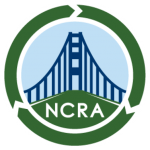By Nik Balachandran, Founder and CEO, Zabble Inc.
None of us expected the world to dramatically change within a span of a few months. Businesses, governments and people all have had to adjust to the new normal in different ways. The solid waste and recycling industry has seen its own share of changes. We have seen temporary policy changes, relaxing bag bans in grocery stores, a shift in waste volumes in commercial and residential settings and the introduction of new types of waste like PPE.
At first glance, it may seem that the amount of waste has gone down as businesses shut down during the first few months as cities and counties instituted shelter-in-place regulations. Only essential workers were allowed to continue to work at physical workplaces and the rest working from home. Commercial waste volumes did drop by up to 40% in many counties while residential and multi-family volumes increased to make up for it with more online orders.
The interesting thing to ask, perhaps, is what the per capita waste generation looks like pre-COVID and now. While the current numbers are not readily available we can look at pre-covid data. According to EPA, the average waste generated per capita in the US every day is 4.5 lbs, out of which only 35% is recycled or composted. The rest ends up in incinerators and landfills. Forty-four percent of this waste stream is made up of paper/paperboard, organics and plastics. It was pretty apparent that 5.6 million commercial buildings generated more waste annually than 136 million residential properties.
Our singular focus at Zabble is to help these organizations that operated out of commercial buildings to achieve Zero Waste. So in 2018 we developed a software paradigm to track programs that incrementally made progress (amount of waste reduction, decreased landfill waste and contamination in all streams) toward Zero Waste, because Zero Waste is as much a journey as it is a destination. We have been working with some of the largest educational institutions and corporations in helping them track and adjust their Zero Waste programs. That is, until Covid changed the landscape of waste.
Reusable and second-hand sharing practices have come to a standstill. Online shopping has almost doubled leading to increased cardboard boxes. More take-out food orders have substantially increased delivery in food containers and plastic bags. PPE litter has become the latest nuisance to plague the environment. More than 200 million masks and 1 billion gloves were ordered to be shipped by FEMA alone by June 2020. Hospitals are seeing a dramatic increase in PPE usage and disposal. “Before the pandemic, the 23 Northwell Health hospitals in New York used about 250,000 pairs of gloves a day; now, it’s 500,000 pairs”, says Chief Expense Officer Donna Drummond. One study by the American Nurses Association found that “43% of waste produced by infectious isolation procedures was attributed to personal protective equipment (PPE)”
There is a massive uptick in single-use disposables fueled by the false claim that disposables are safer than reusable options. This myth was debunked by a group of 100 experts comprising scientists, doctors, professors and epidemiologists.
So where is all this heading?
It is safe to assume the per capita generation of waste is higher now than pre-COVID. As businesses reopen the primary focus is the health and safety of its staff and customers. However, it is also a time to reflect on the new waste footprint.
-
- To keep daily operations, supply chains and waste infrastructure resilient organizations must track the amount of waste, type and origin within their buildings or facilities.
- Track unused supplies in the waste stream to excess purchasing habits and contamination to improper disposing of items (like PPE) in the right bins.
- Use reusable options where available.
- Constant communication with the right messaging can boost staff morale and lead to a cleaner and safer environment.
By being aware and conscious of our habits in the present, we can create a new normal that is better than the past.
For more information on Zabble, visit www.zabbleinc.com.
Here are some recently published articles from Resource Recycling and Waste 360.
